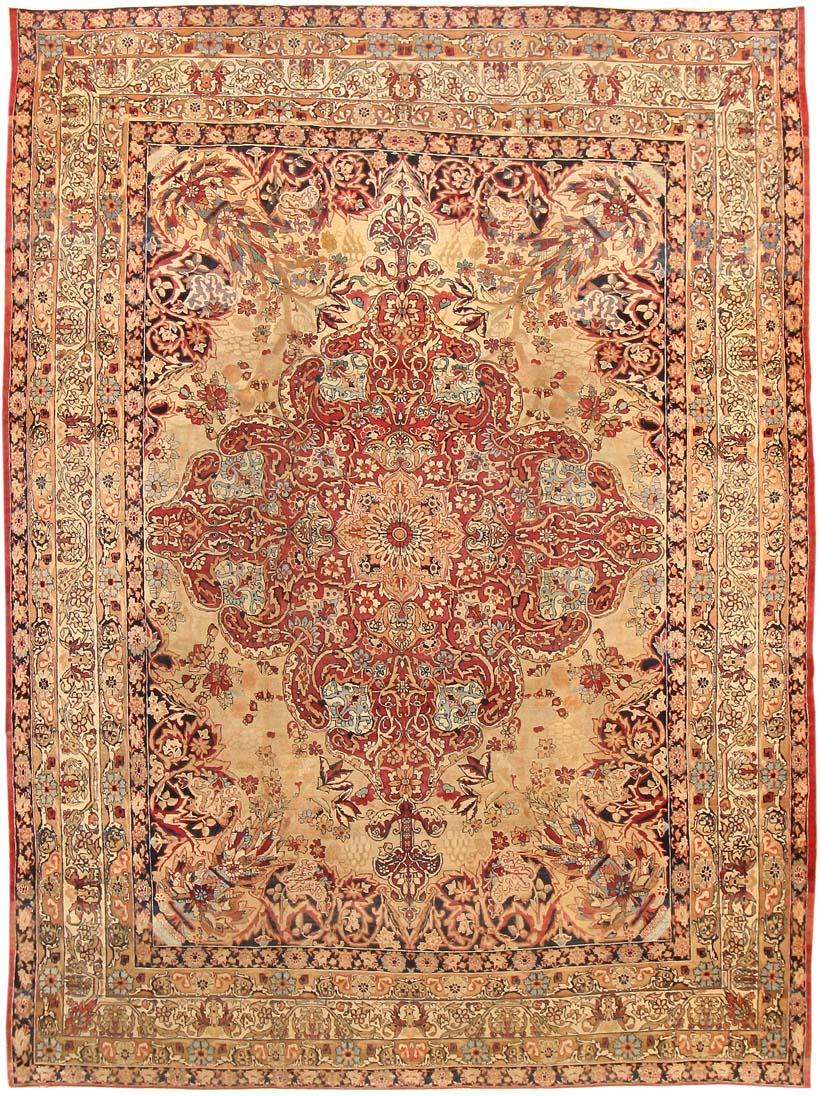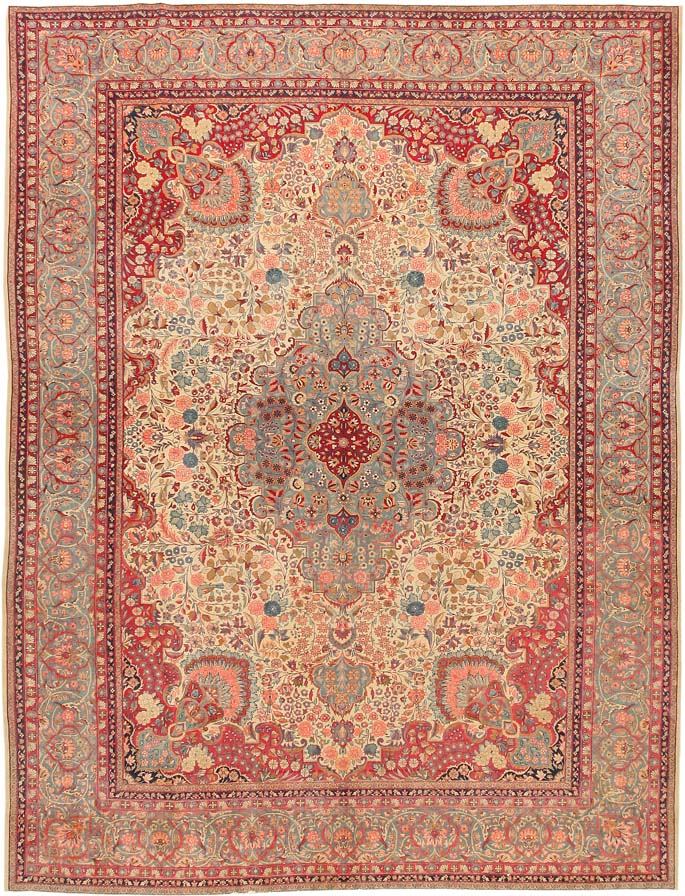The Difference between a Kashan and a Kerman Rug
Beginning with the Safavid conquest of Persia in 1499 and lasting 175 years these royal rulers established several factories to manufacture carpets in the major cities of Kashan and Kerman. To the untrained eye many of these rugs from these regions are difficult to distinguish from one another. The towns of Kirman and Kashan in Central Persia are geographical neighbors and the designs of these rugs are closely related but upon further inspection there are subtle differences between them.

After the break up of the empire Kerman like Kashan experienced a revival of weaving in the early part of the 19th century. Kerman had been one of the leading producers of shawls decorated with boteh’s or paisley designs. It is not surprising that many Kerman carpets in the early days were woven by former shawl makers and employed similar designs. Tree carpets, hunting and garden carpets were based upon the Safavid period. Kerman was also well known for its silk carpets and produced a series of portrait rugs, numbered and inscribed representing famous historical personalities from Moses to Napoleon. Typically, Kerman rugs are more elaborate in design compared to Kashan’s and are densely woven. They reflect a slightly French or European style of representing flowers. Patterns are rich with roses, daisies, peonies and carnations. In general when compared to Kashan’s they use similar colors though Kerman’s have more uniformity and the dyes vary, especially the reds. Kerman reds are more cranberry compared to the Kashan’s madder reds. The finest examples of Kerman’s are called Lavar Kerman, made in the town of Ravar. Know for their fineness of weave, elegant designs of classical derivation and all over or central medallion designs.

The revival of carpet weaving in Kashan in the 19th century was in large part to the merchant Hajji Mollah Hassan whose wife was also a weaver. He imported merino wool and because of that Kashan carpets differed from the weaves of the rest of Persia. Some historical reference suggests that Hajji’s wife might have been the creative force behind this movement. But given the politics of the times she never received the accolades she deserved. The favored designs are complicated floral or floral medallion escutcheons arranged in arabesques over the field. The design of the Kashan is not as busy as the Kerman design. The flowers are bigger, with flowering vines, scrolls and blossoming branches used more frequently. Kashan also produced crude pictorial rugs many illustrating Sufi religious subjects. Kashans typically employ more colors and patterns compared to Kermans.
The finest and very best Kashan carpets dating from the end of the 19th century or the beginning of the 20th century are called Mohtashem Kashan. The weaver’s spared no expense and used quality Manchester or cork wool with lots of luster, the knot count was high, blue weft was common and the weave was finely woven. When signed and dated these extremely rare rugs are some of the most valuable in existence.

After the break up of the empire Kerman like Kashan experienced a revival of weaving in the early part of the 19th century. Kerman had been one of the leading producers of shawls decorated with boteh’s or paisley designs. It is not surprising that many Kerman carpets in the early days were woven by former shawl makers and employed similar designs. Tree carpets, hunting and garden carpets were based upon the Safavid period. Kerman was also well known for its silk carpets and produced a series of portrait rugs, numbered and inscribed representing famous historical personalities from Moses to Napoleon. Typically, Kerman rugs are more elaborate in design compared to Kashan’s and are densely woven. They reflect a slightly French or European style of representing flowers. Patterns are rich with roses, daisies, peonies and carnations. In general when compared to Kashan’s they use similar colors though Kerman’s have more uniformity and the dyes vary, especially the reds. Kerman reds are more cranberry compared to the Kashan’s madder reds. The finest examples of Kerman’s are called Lavar Kerman, made in the town of Ravar. Know for their fineness of weave, elegant designs of classical derivation and all over or central medallion designs.

The revival of carpet weaving in Kashan in the 19th century was in large part to the merchant Hajji Mollah Hassan whose wife was also a weaver. He imported merino wool and because of that Kashan carpets differed from the weaves of the rest of Persia. Some historical reference suggests that Hajji’s wife might have been the creative force behind this movement. But given the politics of the times she never received the accolades she deserved. The favored designs are complicated floral or floral medallion escutcheons arranged in arabesques over the field. The design of the Kashan is not as busy as the Kerman design. The flowers are bigger, with flowering vines, scrolls and blossoming branches used more frequently. Kashan also produced crude pictorial rugs many illustrating Sufi religious subjects. Kashans typically employ more colors and patterns compared to Kermans.
The finest and very best Kashan carpets dating from the end of the 19th century or the beginning of the 20th century are called Mohtashem Kashan. The weaver’s spared no expense and used quality Manchester or cork wool with lots of luster, the knot count was high, blue weft was common and the weave was finely woven. When signed and dated these extremely rare rugs are some of the most valuable in existence.